Author: Director
“Driving an electric car for 704 km back home? Isn’t that unreliable? And in winter, the electric car’s range is not good enough for long-distance driving, and charging is also a problem?”
This is the reaction of a friend when they learned that I was going to drive an electric car for 704 km back home. It is true and yet puzzling.
True because these questions pinpoint the two major pain points of electric cars: range and recharging.
Puzzling because even though the range of electric vehicles has generally exceeded 600 km, and the construction of charging facilities has greatly improved, some users still have doubts about long-distance driving across provinces in electric cars.
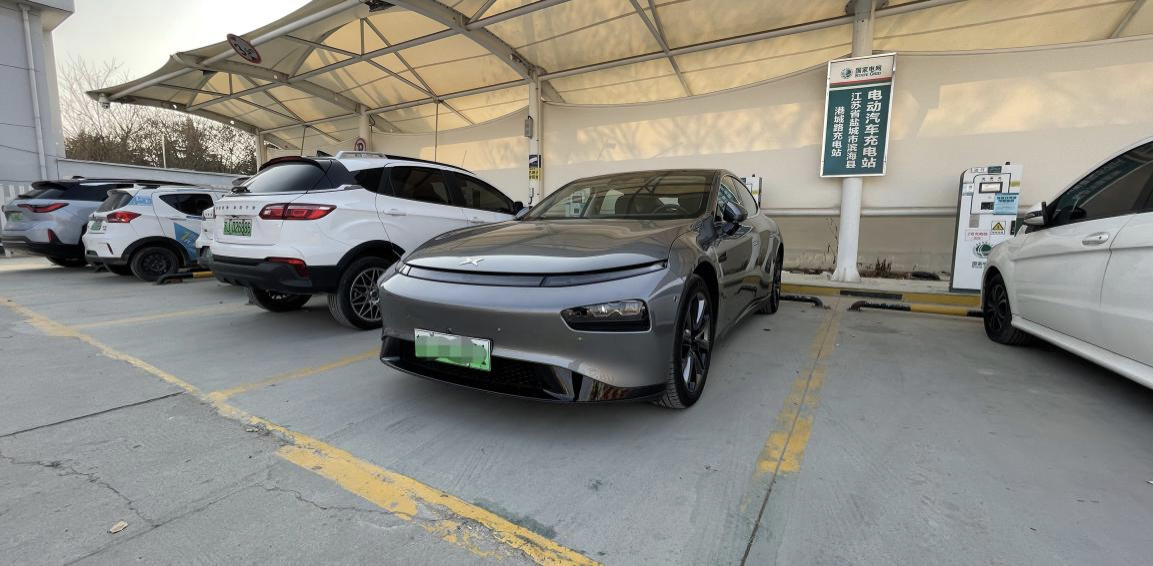
This time, we will start with the most “realistic” long-distance driving experience of the XPeng P7, answering these questions about intelligent electric vehicles from three dimensions: long vehicle range, convenient recharging, and assisted driving.
“Realistic” Background Introduction
This experience took place during the Spring Festival period when I was returning home to Qingdao from Shanghai. The so-called “realistic” driving experience means that I did not use any deliberate behavior to influence the driving, such as adjusting the car’s driving mode, air conditioning mode, and maintaining a constant speed to optimize range.
Why do this?
Previously, some media outlets tested electric cars by setting the car’s driving mode, tire pressure, air conditioning speed, etc. to ensure that the vehicle was maintained under relatively optimal conditions. However, this setting does not fully reflect the vehicle’s capabilities.
Therefore, I want to ignore these limiting conditions and let the car return to its mission of serving people, that is, adjusting all the functions of the vehicle according to the owner’s needs. Intelligent electric vehicles should make travel easier and should not sacrifice the user experience.
Our viewpoint is that good electric vehicle products must meet three necessary conditions “long vehicle range, convenient recharging, and autonomous driving ability” under existing technology and infrastructure conditions.
Let’s look at them one by one below.
Long Vehicle Range and Supercharging are the Basics of Experience

To explain how the overall “energy” structure of electric vehicles affects users, it is not enough to rely solely on this article. The technologies and policy-level factors involved are not easy for consumers to perceive or comprehend.
The most noticeable factors for users are whether the vehicle has long enough range and whether recharging is convenient. These two factors often complement each other and together constitute the user experience of electric cars. If long vehicle range is the basis of user experience, then the recharging system can expand the boundaries of the user experience foundation.
Therefore, we will discuss these two factors together.
Let’s talk about long vehicle range first.Since 2016, the single-vehicle range of electric cars has increased from an average of 300 km under NEDC conditions to an average of 600 km +, with models such as the XPeng P7 even launching a version with a range of 706 km. In other words, the average range of electric vehicles is gradually catching up with that of fuel vehicles.
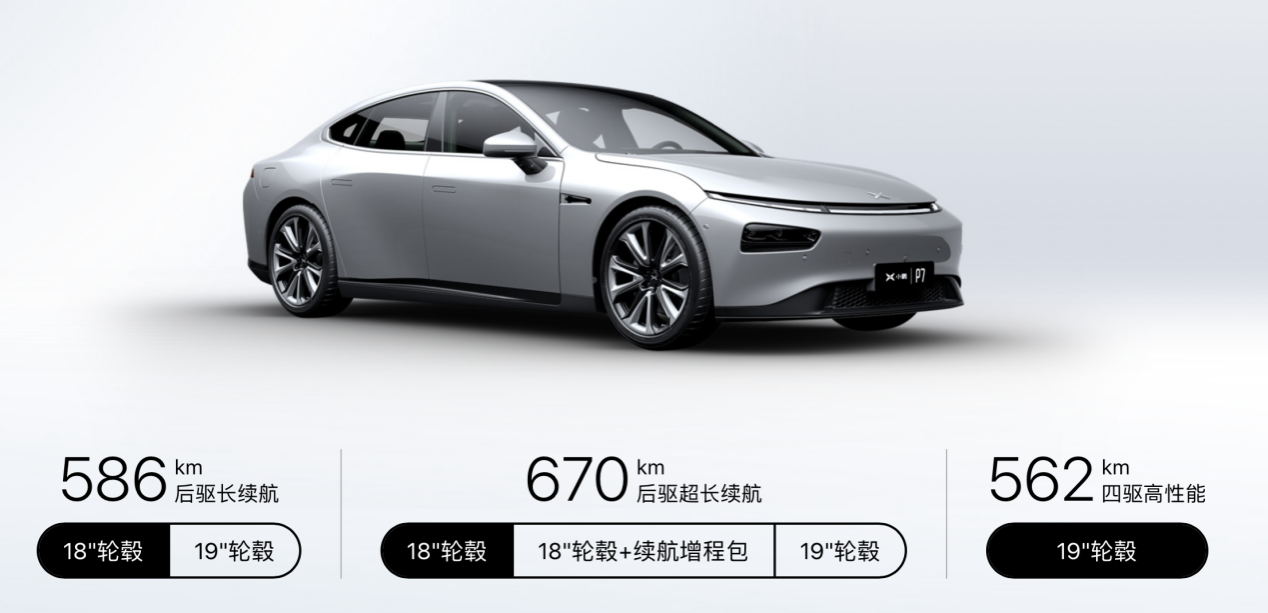
The vehicle I drove this time was the XPeng P7 RWD ultra-long range version, with a range of 670 km under NEDC standards and 576 km under WLTP standards when fully charged. Under this standard, the P7’s range is closer to the actual range.
In order to give users a clearer and more intuitive experience of the convenience of driving the P7 on long journeys, I set the following scenarios:
Scenario One: Starting from Shanghai to Qingdao, pushing the displayed range to an average of 70 km-80 km.
The reasons for this setting are mainly twofold: to experience the vehicle’s highest single-vehicle driving range and to experience the time it takes to charge the vehicle midway through the long journey, as well as the total time it takes to reach the destination.
Scenario Two: After arriving at the destination, fully charge the vehicle and experience the single-charge range and time of use of the P7 in northern cities.
The purpose of this setting is also quite simple, to observe the convenience of a single full charge of the P7 in northern cities during winter.
Now, let’s take a closer look at the performance in each scenario.
Scenario One: Single WLTP range exceeds 400 km.
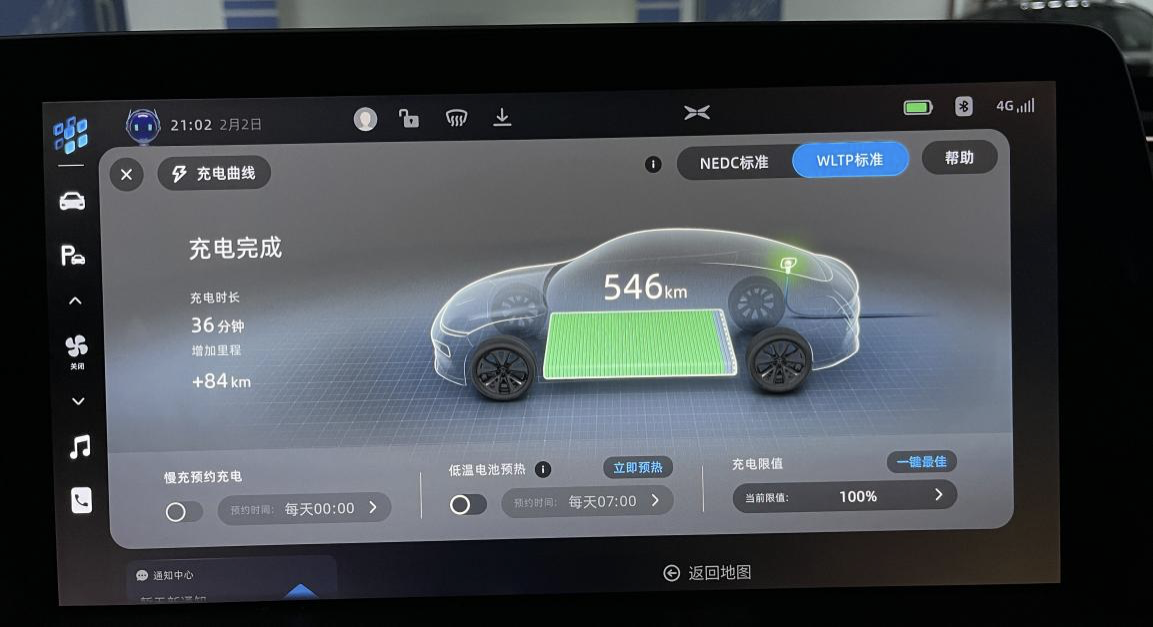
On February 3, 2021, I drove the P7 for 546 km under WLTP standards from Shanghai, and traveled 407 km continuously to reach the charging station of Binhai County Power Supply Company in Jiangsu, with a remaining range of 79 km. During the journey, NGP assisted driving was enabled, and the average energy consumption was 16 kWh/100 km.
It should be noted that on the day of departure, the average temperature in Shanghai was 15 degrees Celsius with strong sunlight, and I did not turn on the air conditioning under such weather conditions. Except for this, all driving conditions were adjusted in real-time.
In other words, under the weather conditions with an average temperature of 15 degrees Celsius, I drove for 5 hours and 19 minutes, setting off at 10:30 am and arriving at the charging station at 3:49 pm. During this time, the actual distance I traveled had exceeded 410 km.
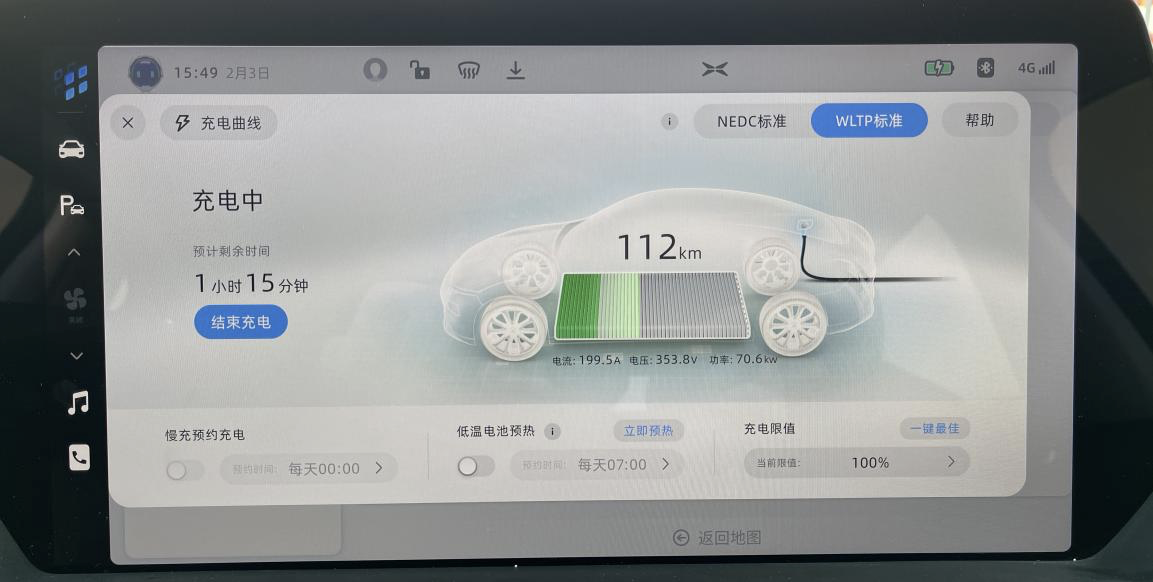 The average charging power of the charging pile in Binhai County Power Supply Company can be maintained at 70.6 kW, and it takes 1 hour and 15 minutes to charge to 553 km.
The average charging power of the charging pile in Binhai County Power Supply Company can be maintained at 70.6 kW, and it takes 1 hour and 15 minutes to charge to 553 km.
The distance from Binhai County, Yancheng to Qingdao is about 340 km. That is to say, as long as I drive normally, I don’t need to recharge behind, and if it is a non-electric vehicle with a total distance of 704 km, it will take about 7 hours. Because of P7’s ultra-long battery life, only one charge is needed to reach the destination, and the total time is only 1 hour and 15 minutes longer than that of non-electric vehicles, which is about 8 hours.
Driving continuously for 5 hours has exceeded the safe driving time of fatigue driving. Therefore, from the perspectives of the actual range of a single charge and the total travel time after adding charging, the long battery life of a single vehicle can fully release the driver’s dominance and make driving more human-centered, which relieves the driver’s anxiety.
Scenario 2: Urban driving can be charged once a week.
There is basically no range anxiety for electric vehicles in urban driving, and mainstream products can handle it. Of course, players like P7 are no exception.
When driving in the city, the frequency of charging needs to be considered instead of range anxiety, which determines whether the vehicle can liberate the user and not bind the user, making frequent charging a user’s annoyance. This also tests the long battery life of a single vehicle.
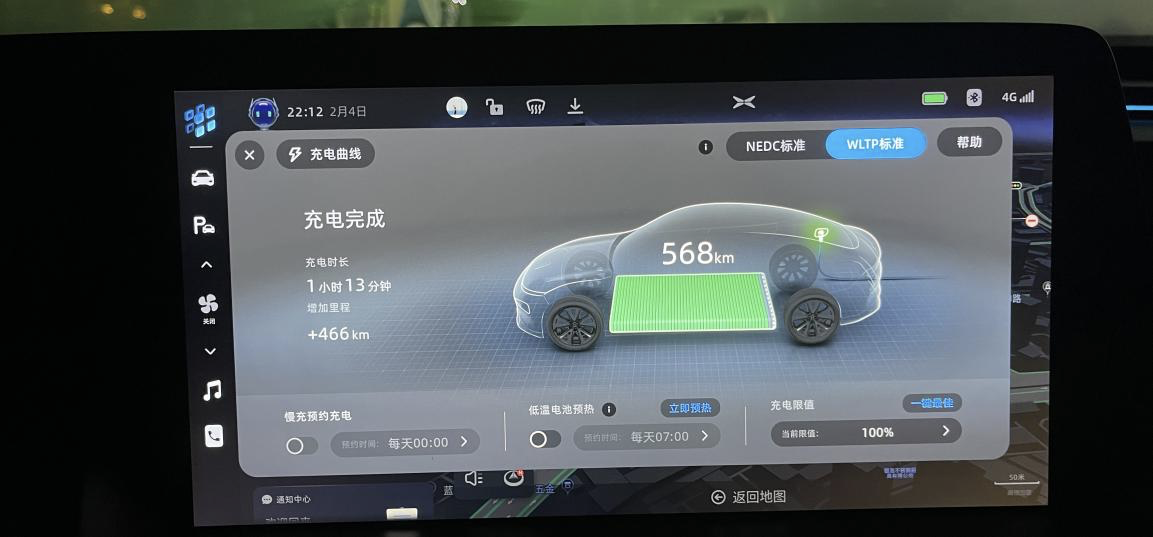
On February 4th, I charged my P7 at a supercharging station in Qingdao to 568 km, and then I only charged it the second time on February 14th. According to my average power consumption of 16 kWh/100 km, P7 was used for a full 10 days, of course, there were days when the car was not driven at all, which is also in line with the real-life scenario.
In other words, if you travel an average of 60 km per day in the city, P7 with a WLTP standard of 576 km can also handle charging once a week. This is the benefit of long battery life, reducing the frequency of user charging.
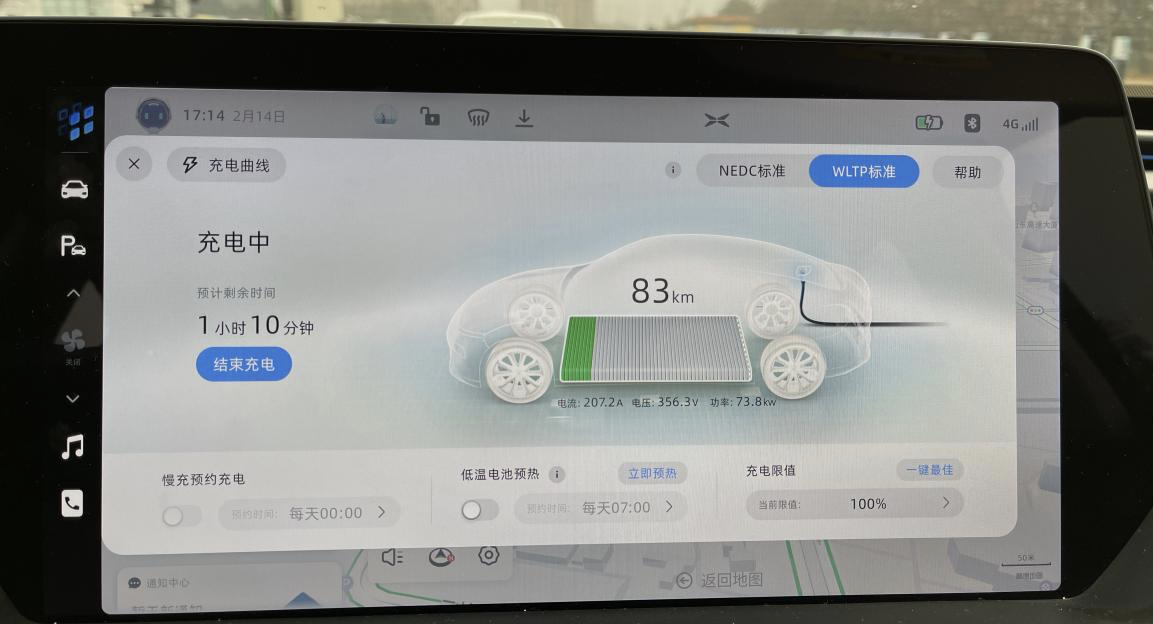
Overall, the two benefits brought by the long battery life of P7 are: first, it relieves the driver’s anxiety in long-distance driving; second, it liberates the user in the urban scenario and reduces the frequency of user charging.
Long battery life of a single vehicle is the basic guarantee of user experience, and supplementing energy is the boundary of user experience. Therefore, having a powerful energy supplementing solution is twice the result with half the effort for P7.
Energy supplementing solution## Let’s Take a Look at the Data:
According to the data released by the China Electric Vehicle Charging Infrastructure Promotion Alliance, as of the end of December 2020, the cumulative number of charging infrastructure in China reached 1.681 million, of which 807,000 were public charging piles, a year-on-year increase of 56.4%, and 874,000 were private charging piles (charging facilities built with vehicles), a year-on-year increase of 24.3%.
As of December 2020, the total number of public charging piles reported by members of the China Electric Vehicle Charging Infrastructure Promotion Alliance was 807,000, including 498,000 AC charging piles, 309,000 DC charging piles, and 481 integrated AC/DC charging piles.
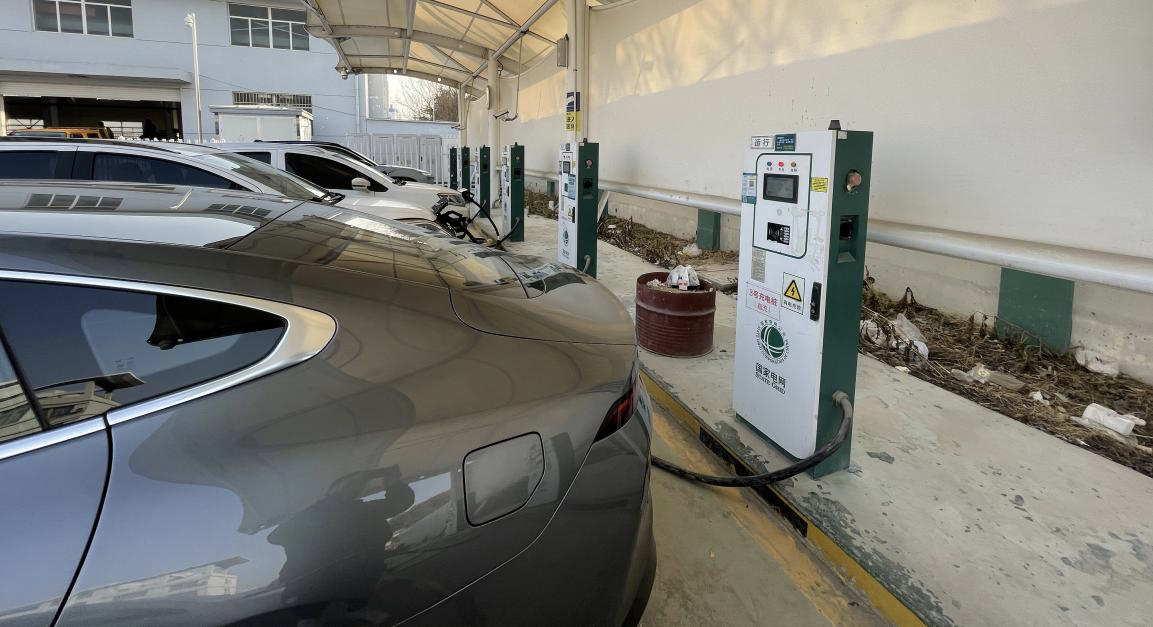
There are three types of companies that make up the operators of charging piles: self-built supercharging piles by companies, privately-funded enterprises, and state-owned grid enterprises.
If you are a car owner who frequently charges, you may know that even though the number of public charging piles nationwide has reached 807,000, charging an electric car is still highly “random”.
If we rank all the charging piles by reliability, self-built supercharging piles of companies> privately-held supercharging piles of enterprises> state grid supercharging piles. Although self-built is the most reliable, new vehicle manufacturing companies are mainly engaged in the manufacturing of complete vehicles, and they do not have too much energy to lay out supercharging piles extensively in the early stage.
That is to say, companies like XPeng and Nio still mainly rely on third-party supercharging. Due to the uneven management of third-party supercharging, there are often problems such as charging pile failure, occupancy by fuel vehicles, and difficulty in finding piles.
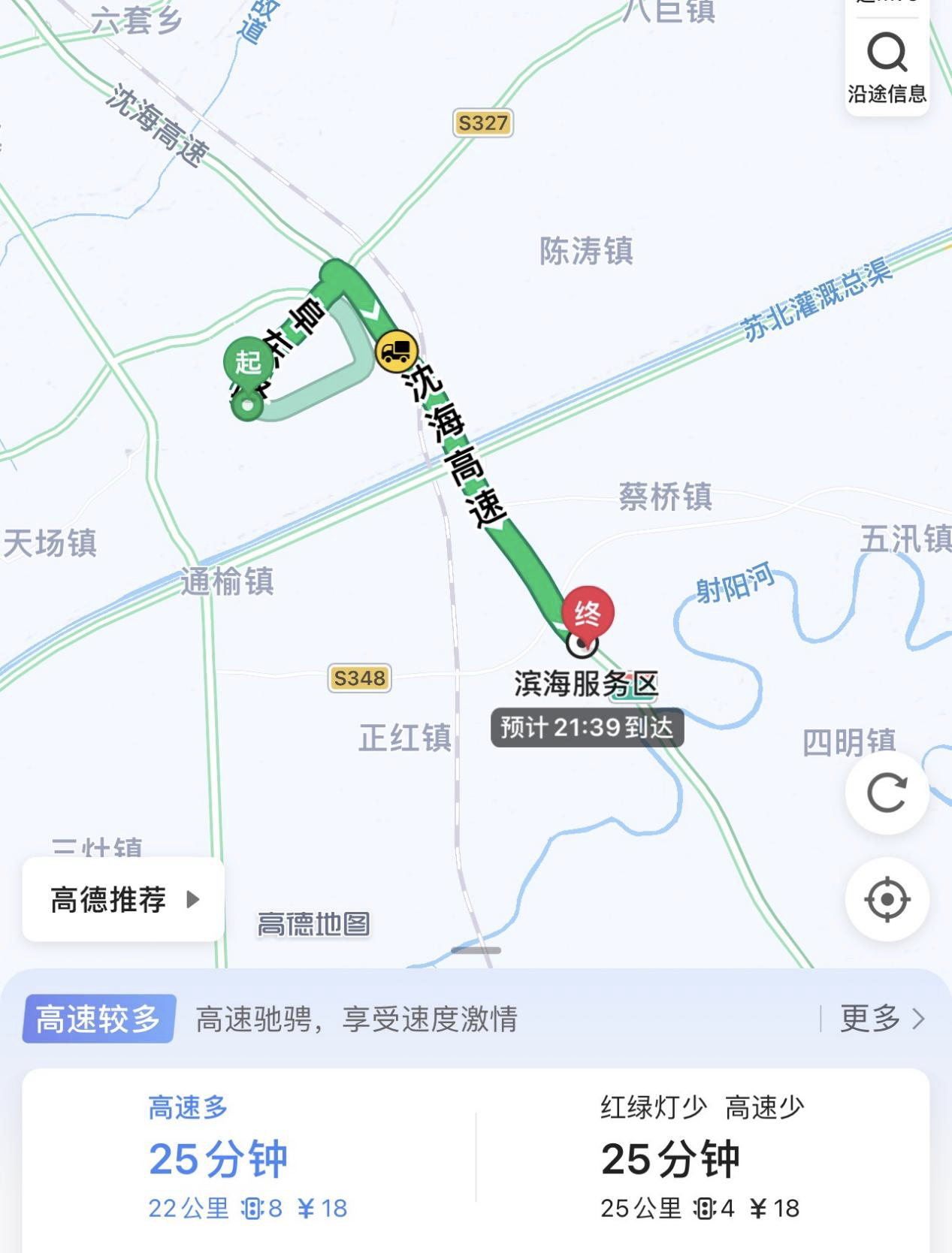
For example, during my journey from Shanghai to Qingdao, there were a total of 6 state grid charging piles when I reached Yancheng Binhai Service Area, but 2 of them were broken, and the remaining four were occupied by charging cars, and there were two cars in line in front of them. At this time, I had to find the nearest charging pile of Binhai County Power Supply Company according to the navigation, but this required leaving the highway.
According to my remaining range, if I did not know whether the pile was available, I had to wait or go to the next service area. However, the service areas on the Shenhai Expressway are relatively scattered, and there is no certainty to go to the next one. In the end, I chose to leave the highway and go to Binhai County.
This kind of problem is only the tip of the iceberg in the charging process. Previously in Shanghai, I also encountered a situation where there was no pile despite the map showing the presence of the pile near the Aiguo Road.
866 Supercharging Stations, No More Range Anxiety for XPeng OwnersOn February 4, 2021, XPeng Motors officially announced that the city where XPeng Supercharge provides lifetime free charging services has expanded to 120, with a total of 866 supercharging stations.
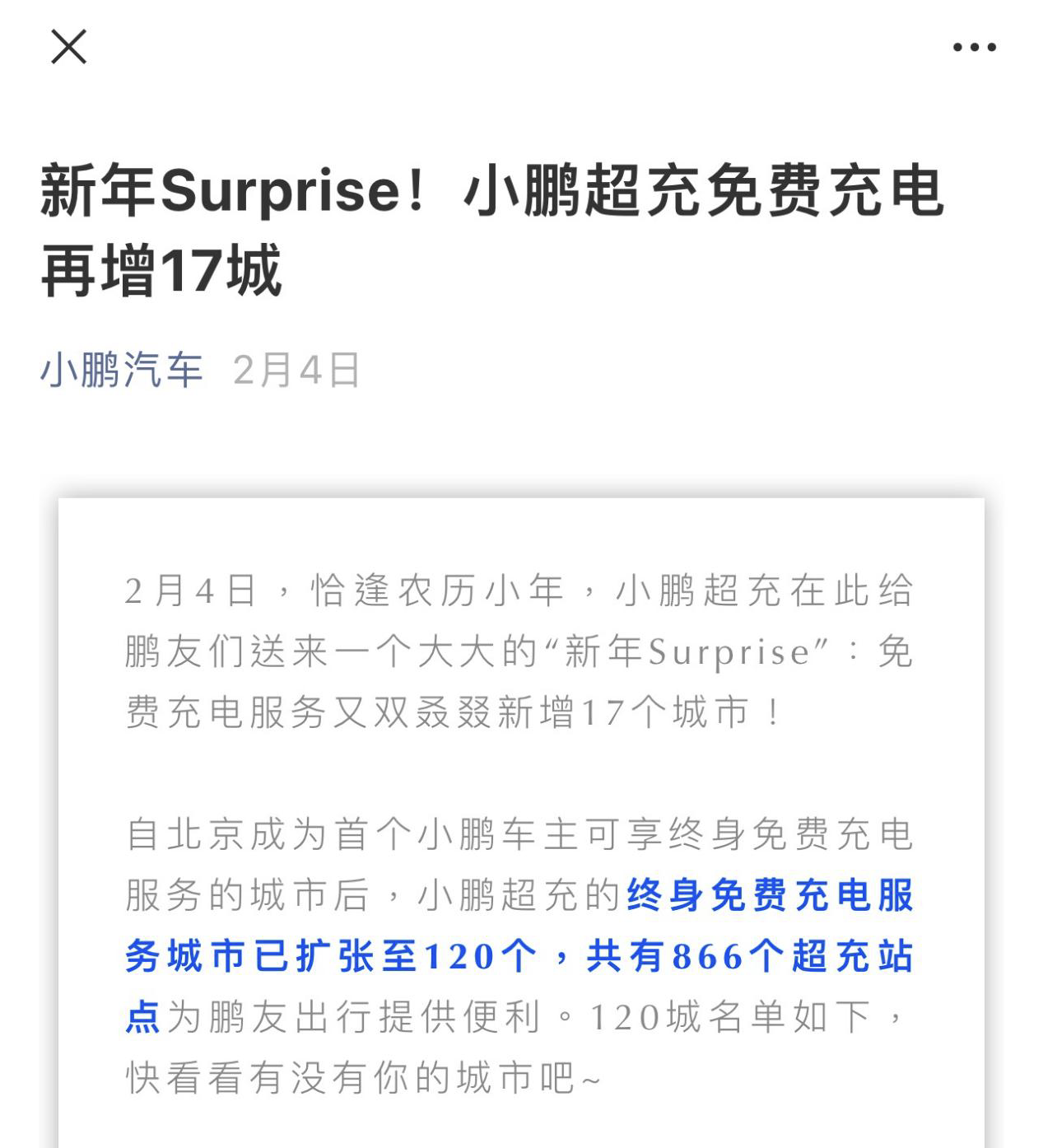
In 2021, XPeng Motors plans to achieve free supercharging services in 200 cities, while the scenes will cover highways, airports, etc.
On December 9, XPeng Motors issued additional shares and raised $2.16 billion, with one of the most important uses of funds in the issuance document being to build a large number of charging facilities in 2021.
Currently, the 866 supercharging points are XPeng’s real actions, and the 200 cities in 2021 might just be a beginning.
For car companies to build their own supercharging stations, it is a win-win move for both themselves and their users. “Sometimes, the mileage anxiety of users doesn’t just come from the short battery life of the car, but whether the energy supplement system is sound or not,” said XPeng.
In 2020, Tesla’s sales exceeded 500,000 cars, and as of January 31, 2021, NIO delivered more than 82,866 vehicles. Behind this is Tesla’s establishment of the world’s largest Tesla supercharging network, and NIO’s combination of supercharging and battery swapping.
Therefore, building their own supercharging stations can balance the energy supplement experience of XPeng Motors due to the increase in sales, and further promote continuous sales growth by improving energy supplement systems.
There are three benefits for users:
First, fast charging.

The most frustrating thing for users about third-party charging piles is the unstable charging power of each pile. When I charged my car at the Rizhao service area, the charging power was only 23 kW, and when I charged at the Sheyang service area and the Xiangshui service area, the average charging power was only 35 kW. This means that encountering a low-power charging pile on the highway is a high-probability event for car owners.
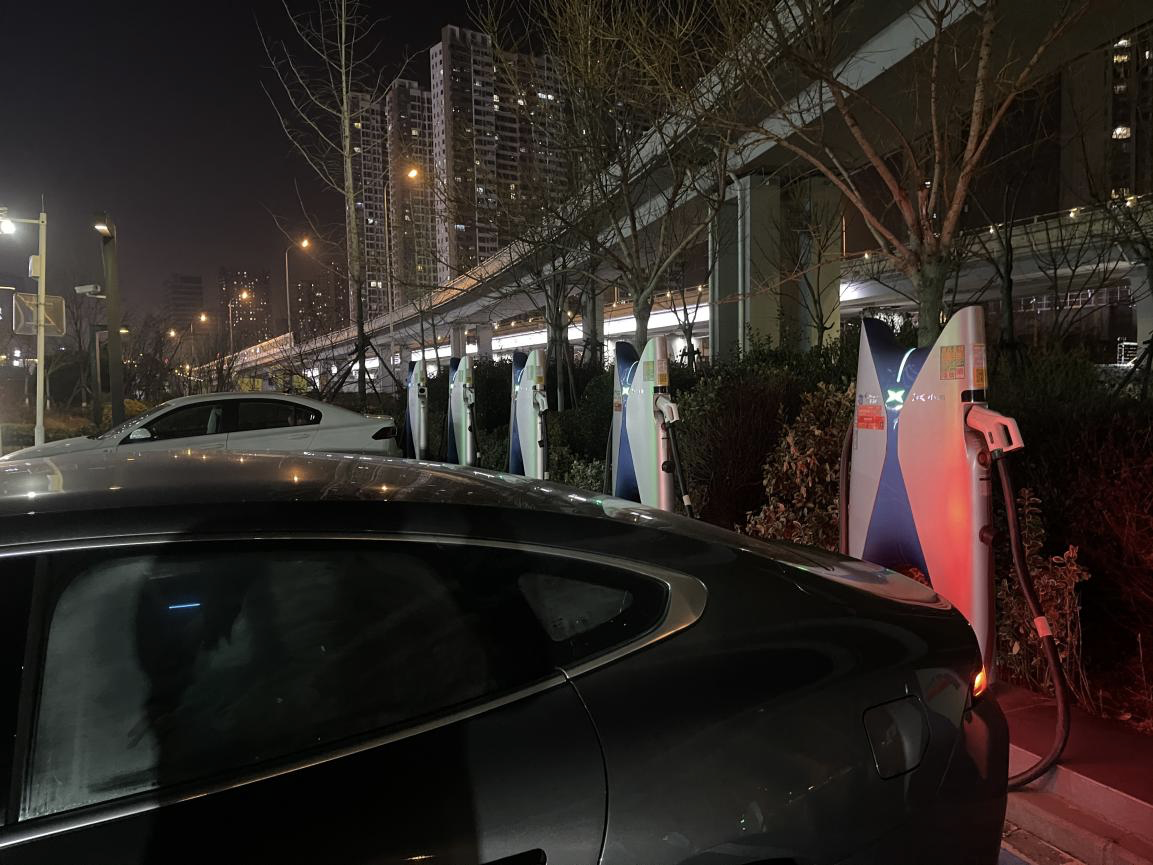
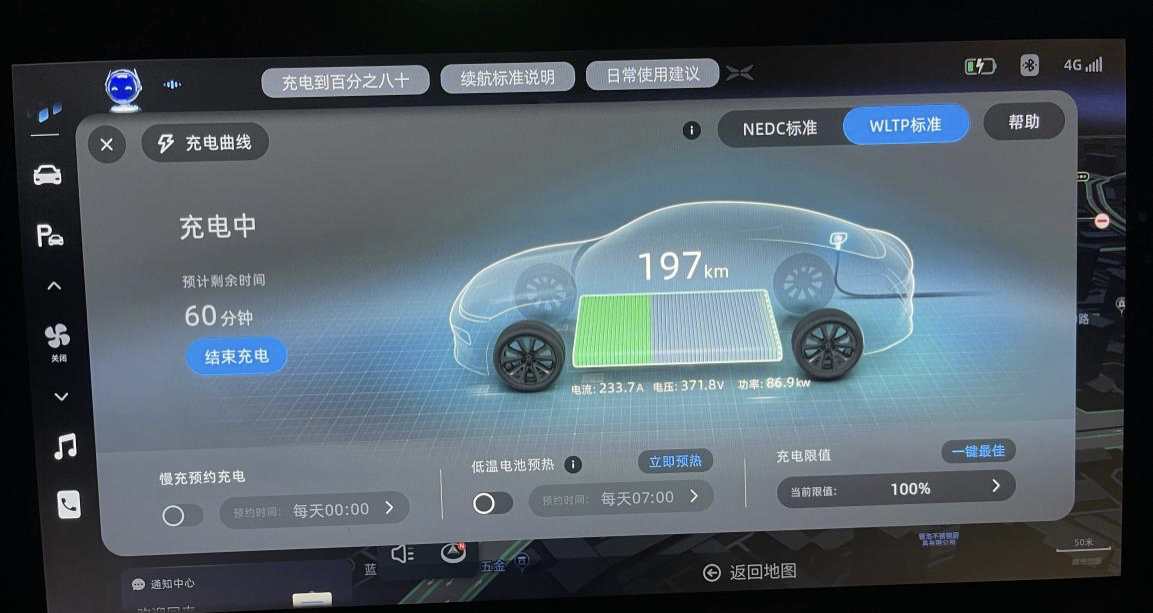
XPeng Motors’ supercharging station has a maximum charging power of up to 180 kW. Based on actual experiences, XPeng Supercharge can maintain an average charging power of 80 kW – 90 kW, which means it takes about 50 minutes to fully charge a P7 with a WLTP range of 576 km.
Second, usable charging piles everywhere.Because self-built supercharging stations are managed strictly in the operation and management of charging piles for the vehicle industry, as long as the self-built charging piles appear on the charging map of the vehicle company’s official APP, you can boldly go to them, which can effectively alleviate the anxiety of vehicle owners when their remaining battery level is low.
III. Supercharging is free.
Electric vehicles are cheaper than gas vehicles, and XPeng makes your electric vehicle even more cost-effective than others’. Although the self-built supercharging stations by XPeng are great, it’s not enough. How does XPeng make it happen?
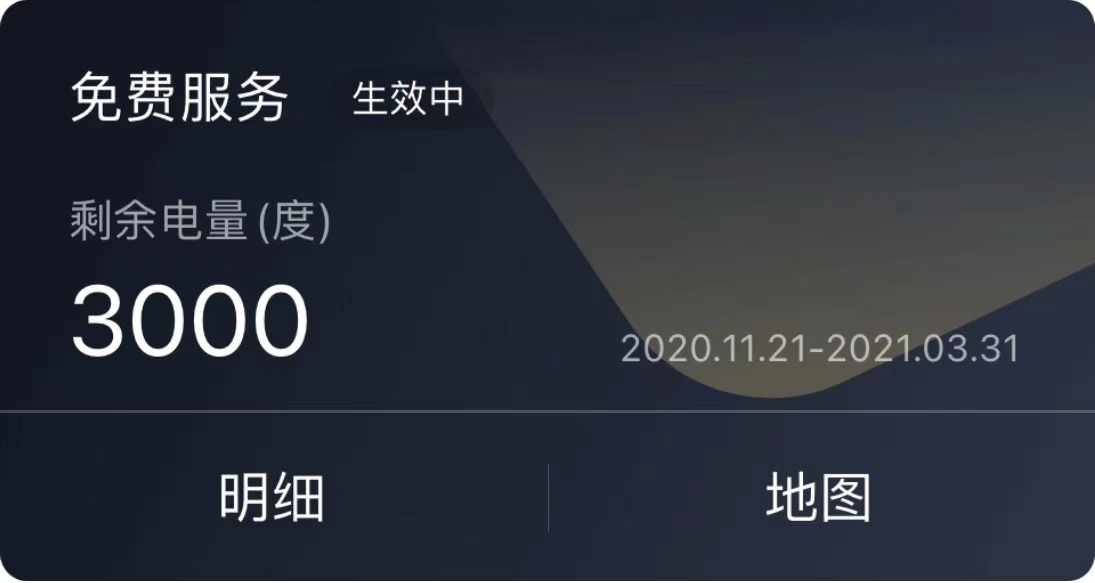
According to XPeng’s policy of free supercharging, XPeng car owners can get a free supercharging quota of 3,000 kWh per year. According to the average distance traveled by users of 20,000 kilometers per year, 3,000 kWh is enough to cover it. Even if it is calculated based on an average of 1 yuan per kWh, 3,000 yuan can be saved in one year.
Except for the free quota available at XPeng’s self-built supercharging stations, XPeng’s official APP also cooperates with a group of high-quality third-party charging piles that are very easy to find. The APP only needs to be opened and the charging center will show which ones are free charging piles.
To sum up, with 200 cities and thousands of supercharging points in 2021, XPeng has become an important piece of the puzzle in creating a user-friendly experience for electric vehicles. Now, we can answer the question at the beginning of the article: Judging from the experience of driving XPeng P7, the overall endurance of electric vehicles and the reliability of self-built energy supplement network have gradually improved, and there is no big pressure to cope with long-distance travel across provinces.
NGP suitable for Chinese road conditions
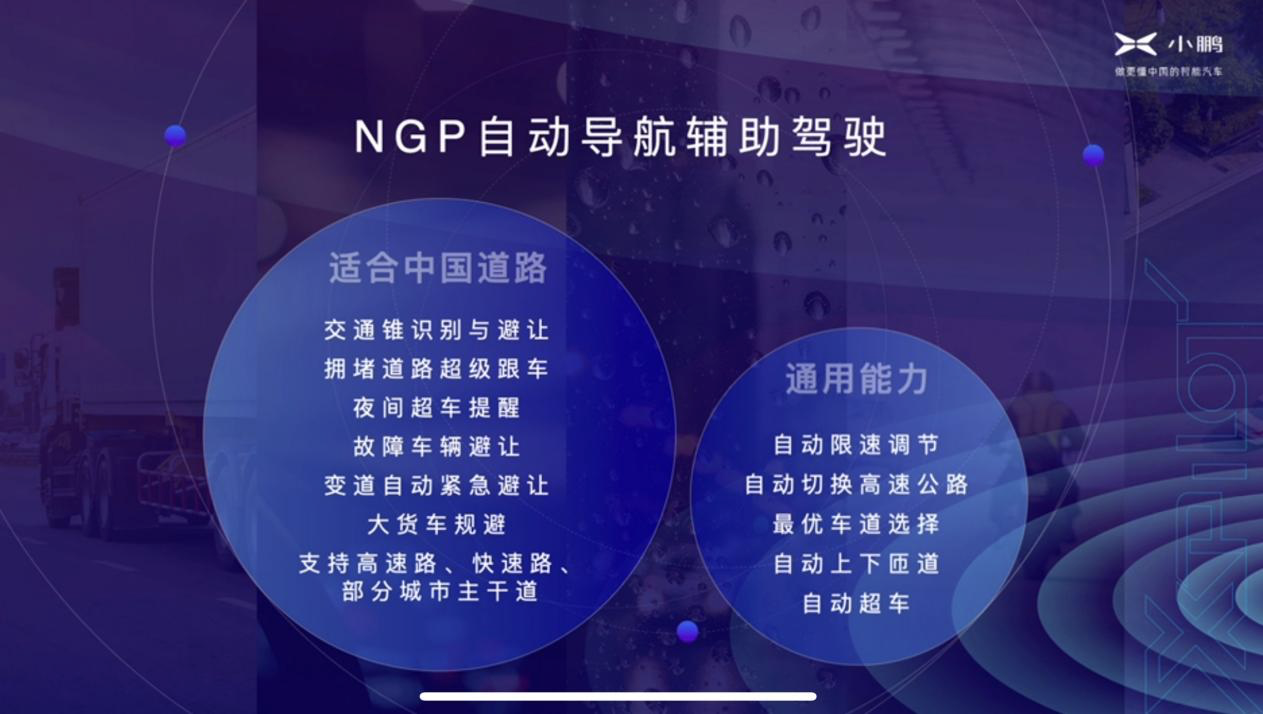
On January 26, 2021, XPeng finally started to push the official version of NGP to car owners before the Spring Festival.
According to XPeng’s official data, from January 26 to February 9, in 14 days, users have driven more than 500,000 km with NGP, and the total usage time is 5,952 hours. NGP executes lane changes, high-speed switching, and entering and exiting ramps 115,758 times in total.
As of 8:00 pm on February 20, the user’s usage of NGP has surpassed one million kilometers in just 25 days, accumulating 1,023,884 kilometers, and the second 500,000 kilometers were completed in just 11 days.
Before talking about the practical experience with NGP, there is a concept that needs to be understood: “Compared with L2-level assisted driving capability, the biggest difference of NGP is deeper control of the vehicle based on the foundation of advanced driving assistance, such as realizing autonomous lane changing, driving out of ramps according to navigation, and automatically regulating speed according to high-precision map data“.In short, NGP further improves the automation level of vehicles.
It should be noted that XPeng Motors officially emphasized that NGP is still an assisted driving system. NGP has both strong and weak scenarios, and the word “assisted” defines the safety boundary of NGP.
To evaluate the ability of assisted driving, we can look at how many scenarios it can cover and its application ability in each scenario. NGP adds several conditions on this basis: 1. The duration of using NGP on highways, which tests the continuity of autonomous driving; 2. The execution logic of automatic lane change and entering/exiting the ramp; 3. The degree of localization.
Let’s first look at the duration of using NGP on highways
The “duration of use” here refers to the time when the vehicle is driven autonomously when NGP is turned on and the driver does not take over the vehicle.
The duration of use after the assisted driving is turned on is an important indicator of the continuity of autonomous driving. At first, I did not have high expectations for NGP on this first use. However, I quickly realized that the fact may not be as I expected.
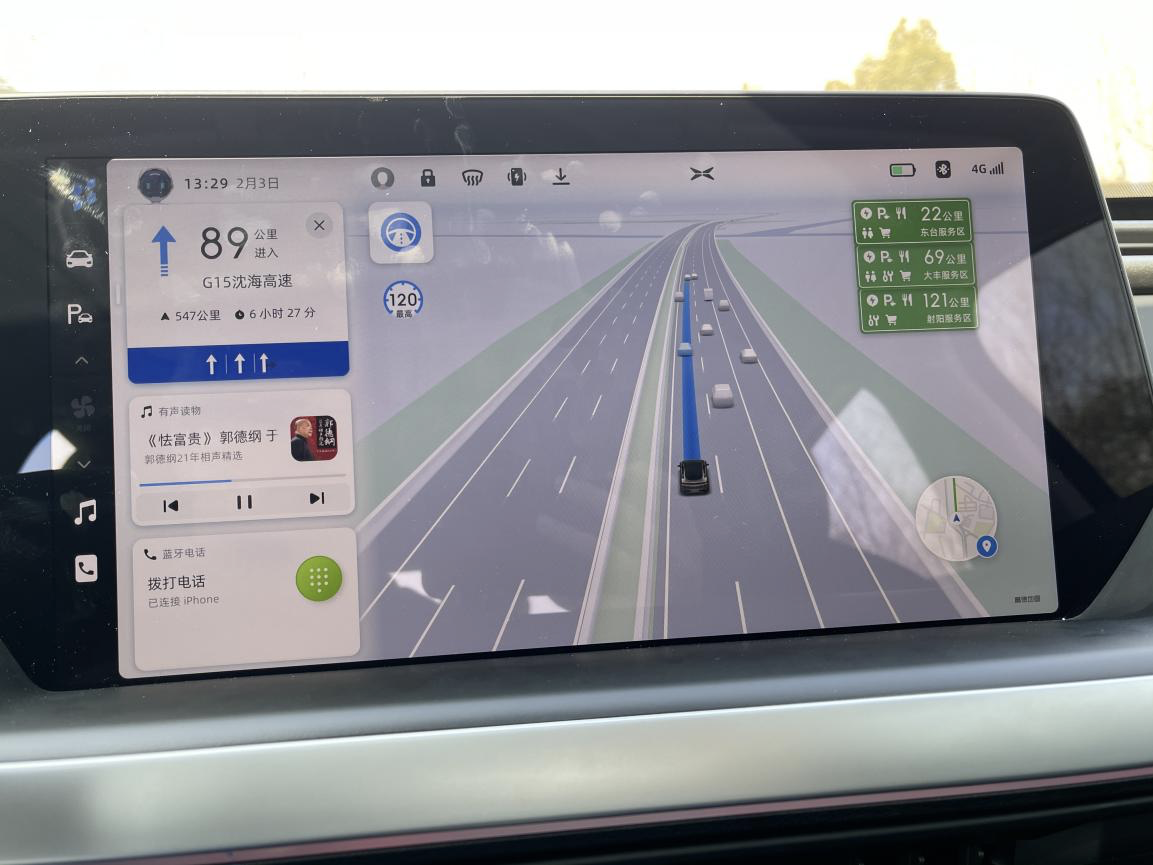
During the 1400-kilometer round trip from Shanghai to Qingdao on the highway, NGP showed high maturity. When driving from Shanghai to Qingdao, the road was smooth and I used NGP all the way. If it weren’t for rest and charging at the service area, I could drive without taking over the vehicle, even when encountering increased traffic flow and short congested sections.
The maximum speed of NGP is limited to 120 km/h by regulation. When the road is clear, the system will travel at the maximum speed regardless of the limit. If the front vehicle is driving too slowly and the system judges the road condition to be safe, it will automatically change lanes to overtake.
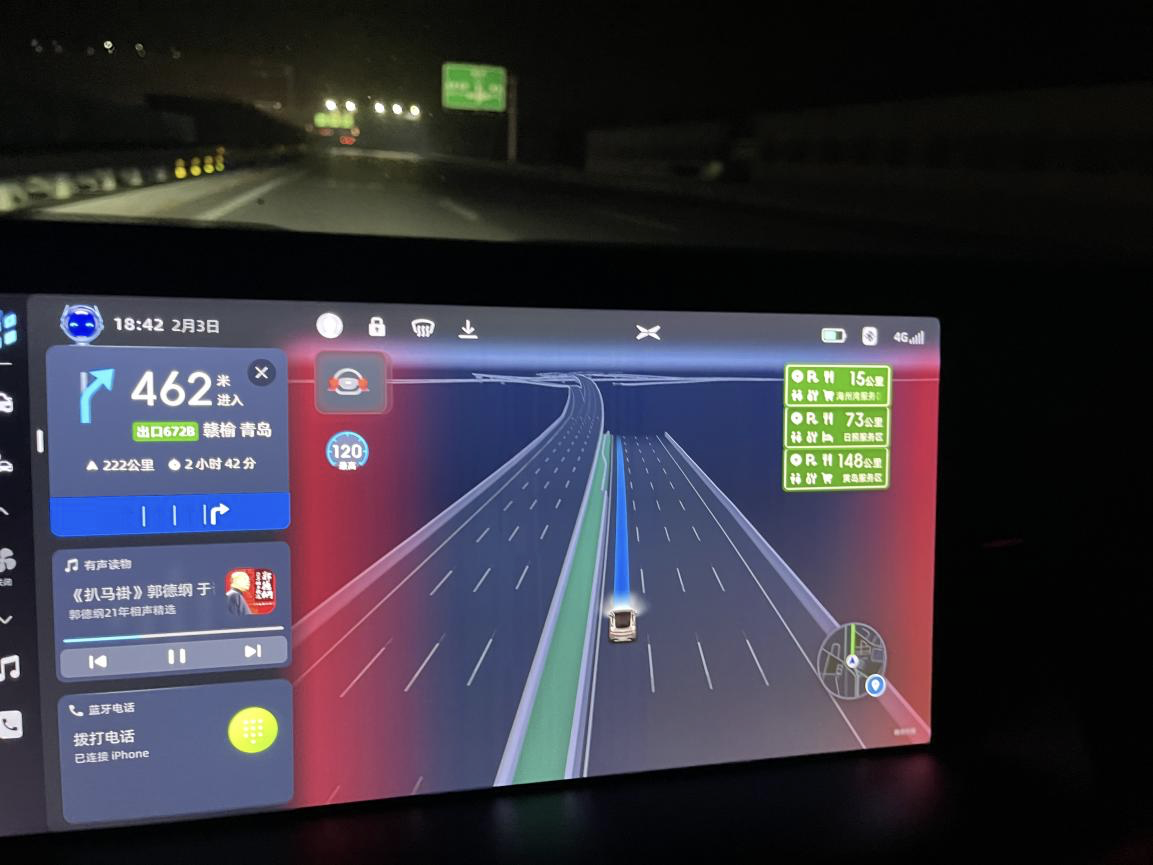
During the journey, there were also road sections without high-precision map data. At this time, NGP would exit and XPeng L2 assisted driving would take over the vehicle. Moreover, XPeng NGP has an advance notice and is displayed visually when it exits.
The visualization directly displays the section without high-precision map data, which is a very good experience because it is more intuitive and easier to perceive than sound.
You may have a question: If NGP exits, will it affect the duration of automatic driving?
My answer: It won’t.
The duration of use we are talking about is the state when the system is still turned on. As long as the assisted driving system is not exited, the continuity and stability of autonomous driving are still complete.
After NGP exits and the L2 system takes over, the vehicle will no longer change lanes automatically or automatically adjust the speed limit, but it can still drive normally.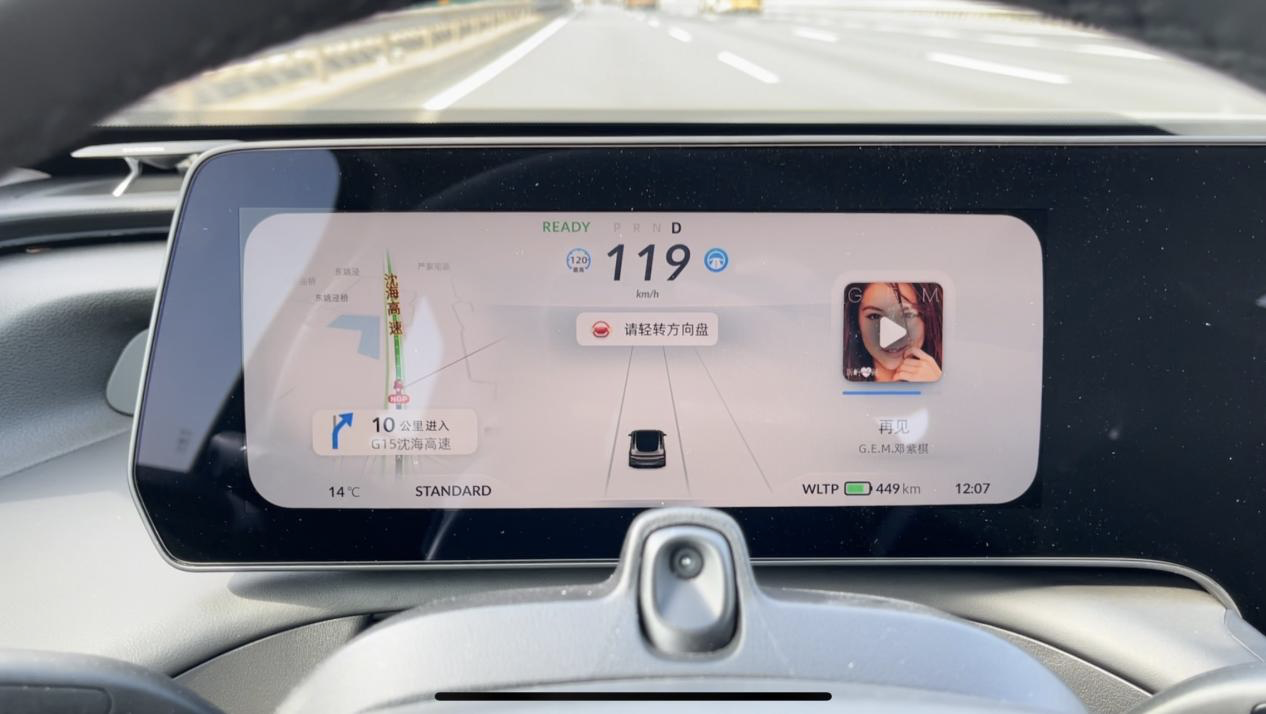
The strategy of Xpeng NGP is relatively conservative, with very frequent driver monitoring and reminders to touch the steering wheel every 25 seconds. Even if Xpeng’s torque plan is used, a gentle touch can activate the ADAS warning. However, the 25-second reminder time is too frequent when driving at high speed.
After driving with NGP, I would summarize it as “boring” on the highway. You should know that there is not much you can do after the system is turned on.
Automatic Lane Change and Ramp Entry/Exit Logic
As we mentioned earlier, NGP needs to be manually taken over very rarely, and automatic lane change plays a key role in this.
When will we actively exit from ADAS? There are situations such as aggressive merge, extremely complex road conditions, sensing danger, and overtaking.
But what about smooth road conditions? Overtaking becomes a more common maneuver while automatic lane change brings two benefits: 1) No need to manually exit the system to change lanes for overtaking; 2) No need to manually signal to change lanes.
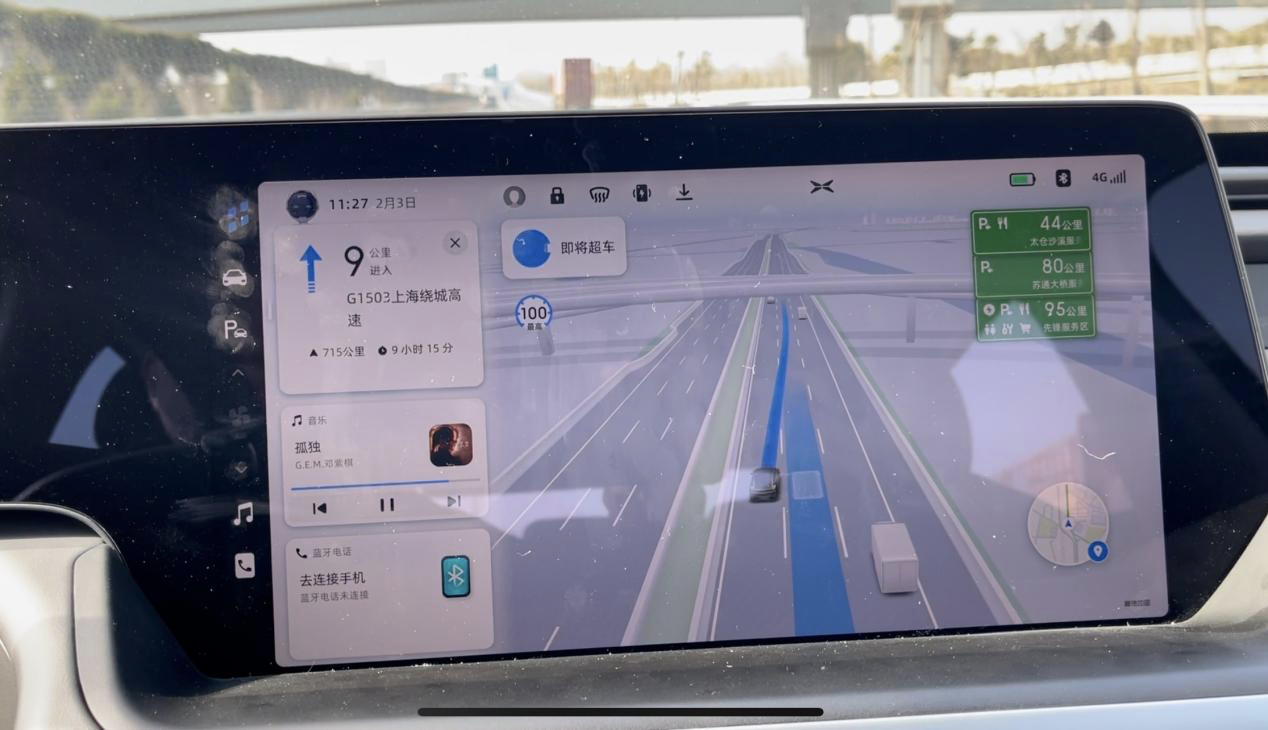
NGP’s automatic lane change logic is already very anthropomorphic. Before executing the lane change, the voice prompt will remind you to perform the maneuver. The experience is quite good because the lane change action is almost synchronous with the voice prompt, which means that the vehicle is actually changing lanes when the driver hears the voice prompt.
Furthermore, when Xpeng P7 starts to change lanes, it rotates about 5 degrees in the desired direction, and you can clearly feel the acceleration of the vehicle. This is the logic of human drivers overtaking and quickly passing by. This depends on the lateral control capability that Xpeng’s ADAS possess.
For example, although the ideal ONE has automatic lane change with signaling, it is more like a translation. Only after completely entering the lane and there is no vehicle in front, will the vehicle automatically accelerate to the set speed limit.
Of course, NGP also executes useless lane changes sometimes. At first, you may think that the system is doing random lane changes back and forth in the traffic flow.
If you carefully experience it, you will find that it is more like imitating human drivers, but the machine cannot reach the delicacy of human driving. For example, if the system thinks that the front car is too slow, it will change to another lane, only to find out that the vehicles in this lane are slower, but this is also a behavior that humans often exhibit.
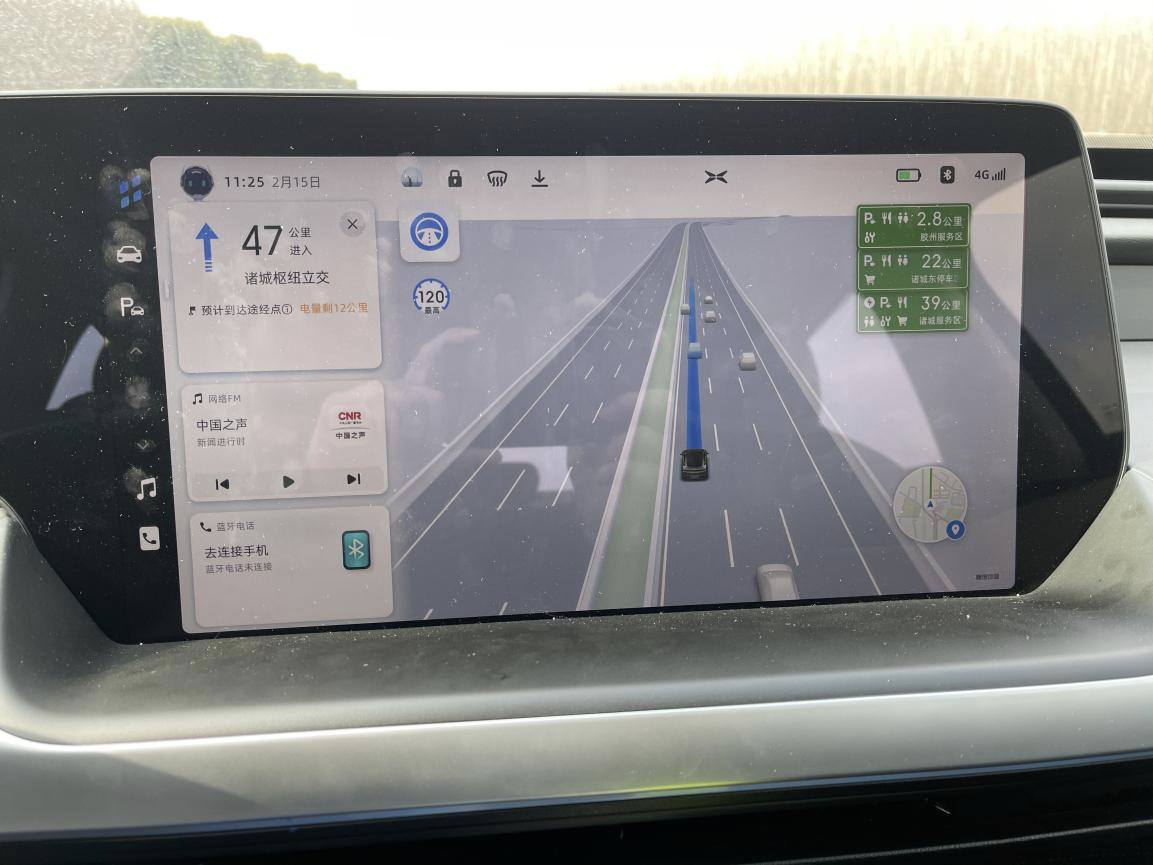
From Actual Experience, NGP’s Lane Changing Strategy is Conservative to Maximize User Experience While Ensuring Safety
When I was driving the P7 on the left-most lane, there was a car in the distance in front of me, and another car was in the right lane, relatively close to the car in front of me, though on another lane. At this time, NGP reminded me to change lanes to my right. I was thinking, why change lanes when there is a car in front of me on the right lane? It wasn’t until I changed the lane that I realized the car on the right lane was behind the car in the left lane, but its speed was faster. By waiting for just a little longer, both vehicles on my lane could easily overtake the car ahead.
NGP’s lane-changing strategy, based on actual experience, is conservative while still aiming for optimal user experience. Small changes are made to maximize safety, but also to minimize situations where users experience noticeable delays. For example, the safety reminder for lane changes is almost synchronous with the action taken, which significantly minimizes perceived delays.
Regarding entrance and exit from ramps, here are some sharing points from my first-hand experience using Small Palm’s NGP:
-
NGP transitions from the middle lane to the right-most lane, which is a relatively linear process.
-
However, the response time for lane changing is not fast. That is, turning signals start in a lane-changing situation, but shifting into the lane will be delayed by about a second.
-
When the vehicle is approximately 150 meters from the ramp entrance, the speed begins to slow down, accompanied by turning signals. Before entering the ramp, on a short section with no lanes on the pavement, the vehicle can drive normally, and there is no loss of control over the route trajectory.
-
When entering the turning ramp, the curvature is large. Throughout the turning process, the P7 functioned well. Based on previous tests of automated driving systems with similar curvature, only the Tesla manages to pass, but now the P7 does it relatively easily.
-
After exiting the ramp and merging onto the main road, NGP quickly switches to the left-most lane and drives normally.
Finally, Let’s Talk About Localization
Small Palm has always aimed to develop an assisted driving system suited for Chinese road conditions, and this is also reflected in NGP. Automated driving is a very complex system, and every function affects the continuity of users’ experiences and the stability of the automated driving system.
Therefore, localizing functions such that they reflect Chinese road conditions is crucial. Small Palm’s NGP integrates high-precision maps covering a large amount of perceived information, as well as high-performance positioning modules, and further enhances NGP’s user experience through visual localization capabilities.
The most impressive function for me was “Automatic Speed Limit Adjustment”. This function significantly impacts the driving experience and road safety. If you’ve driven a Tesla NoA, you will have a clearer understanding. The poor user experience with NoA lies in the fact that it doesn’t slow down before entering ramps, but rather undergoes rapid deceleration when entering the ramp. After exiting the ramp, it cannot accelerate automatically. Both situations make drivers feel compelled to take action.Polestar provides accurate information on speed limits, curves, slopes, and cross slopes through its highly precise maps. When executing sharp turns or entering a ramp, the NGP system automatically reduces the vehicle speed around 150-200 meters before the turn. Once on the ramp, the speed is maintained within the speed limit range.
Based on Chinese road conditions, the self-driving team at Polestar has developed many localized features, such as super-following in traffic jams, nighttime overtaking reminders, avoidance of malfunctioning vehicles, and automatic emergency lane change.
These functions are not always experienced by the user in real-time, but the benefits become apparent when encountered. For example, while driving on a section of Rizhao Road, I encountered a malfunctioning vehicle blocking the middle lane with increasing traffic flow. With L2 assistance, a driver would typically need to manually change lanes to avoid the obstacle. However, NGP recognized the stationary vehicle and automatically sought to switch lanes, without requiring the driver to take over.
In general, NGP is capable of handling most road conditions, and Polestar’s local optimizations align well with user needs. If you have extensive interprovincial travel needs, NGP is undoubtedly suitable for you.
In summary, Polestar’s motto of “making travel simpler” is reflected in their actions. Long battery life and a self-built ultra-fast charging network solve user concerns surrounding charging and range anxiety, while NGP truly makes long-distance travel “boring.”
Conclusion
As you can see from the above content, the most crucial point is that Polestar is making “travel easier” a reality.
Long battery life solves user worries about charging frequency and range anxiety, and NGP makes long-distance travel “boring.” Moreover, the self-driving team has developed a range of localized features to enhance user experience.
This article is a translation by ChatGPT of a Chinese report from 42HOW. If you have any questions about it, please email bd@42how.com.